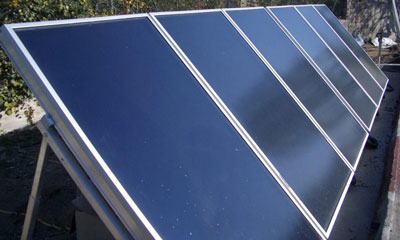Until recently there were only off-grid PV systems and a limited number of on-grid systems for self-consumption in El Salvador; most of them in government buildings, schools and universities.
By the end of 2015 the largest PV system in operation was 99 kW.
In October of that year AES Moncagua PV plant, with an investment of US$ 4 million and 2.5 MW, was inaugurated.

This solar plant located in San Miguel is directly connected to Electric Company of East (EEO) distribution network for later supply.
At present, it is under construction that will be the largest solar power generation plant in the country, with 100 MW of installed capacity.
It will be located in Rosario de La Paz, La Paz department, in an area of 150 blocks, a few kilometers from Monsignor Óscar Arnulfo Romero International Airport.
The project, totaling US$ 151 million, will be financed by an IDB loan of US$ 57.7 million, a co-loan from the Canadian Private Sector Climate Fund of the Americas of US$ 30 million and co-loan of a French Development Agency subsidiary of US $ 30 million.
The winning company Providencia Solar S.A. de C.V., a company incorporated in El Salvador for the sole purpose of the project developing, is owned by an independent French renewable energy producer.
At the end of June 2016 the first solar module was installed and construction began.
Initial forecasts estimate that it will be injecting power in April 2017 after 11 months of construction and an additional test perform month.

Solar Reserve and La Trinidad projects (also of 2014 bid) would add 28 MW.
During January 2017, another 169.9 MW of renewable energy were awarded, of which 50 MW will be from wind energy and 119.9 MW from photovoltaic generation.
There were 29 proposals (4 of wind generation and the rest of photovoltaic).
The offers were in response to a tender launched by the country for 170 MW of renewable energy (initially 100 MW of solar and 70 MW of wind).
The bidding rules leave a construction period of 3 years for wind projects and 2 years for solar.
Tomorrow 25th of January will be official notification date and contracts will be signed between January 31st and March 27th.
There were 4 solar winning proposals for this tender.
A company combining French and Salvadoran capital was awarded 50 MW at a unit price of US$ 49.55 / MWh and another 50 MW at US$ 49.56 / MWh. The solar plant, with an estimated investment of US$ 150 million, will be located in Ozatlán, Usulután.
In addition, 10 MW of solar generation were awarded to an offer at US$ 67.24 / MWh and 9.9 MW to another offer at US$ 54.98 / MWh.
Allocation to solar projects exceeded the 100 MW expected because wind energy supply offers did not reach the initially installed capacity required.
Solar energy wherever you are with Sopelia.




